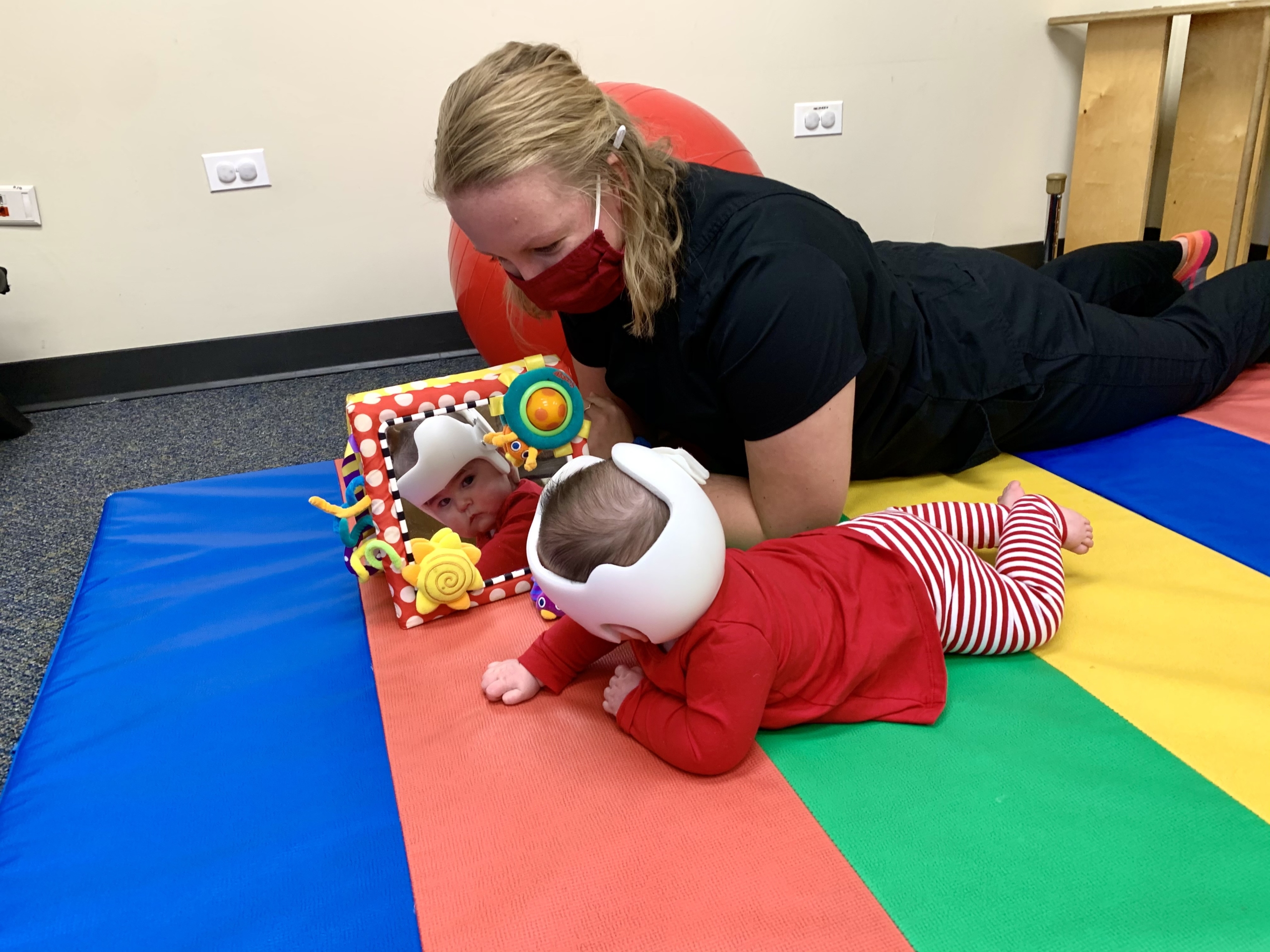Parents frequently ask what to do if their newborn/baby does not like “tummy-time”. The side-lying position has been emphasized for new parents as an important position especially with the “safe-sleep” initiative recommending lying a baby on their back to sleep. In the early months, babies tend to sleep frequently, and therefore would be on their back frequently. During active periods throughout the day, it is recommended to spend time playing on their stomach, “tummy-time” or “tummy to play”, so that they can build head/trunk control and experience weight bearing and gravity in another position. “Tummy-time” assists in learning important foundational skills for rolling, crawling, sitting, and many other benefits even as they grow into toddlers and school aged children. To equate to the time spent sleeping on their back, a goal has been recommended for babies to spend a total of 60 minutes of play on their stomach whether that is many short sessions or a few longer ones. Many babies and parents find this position hard to tolerate even for a few minutes. One position that can be easier for young ones to endure and has many benefits whether tolerating “tummy-time” or not, is side-lying. Side-lying is a transitional position between lying on their back to lying on their stomach. Transitional play positions support children being able to become independent with mobility and better cope emotionally with a variety of transitions throughout life.
Benefits:
While lying on their side they can:
- Activate neck muscles against gravity to build strength and head control for “tummy-time”,
- Strengthen and become more aware of hands/feet/sides of body,
- Co-contract back and stomach muscles which will be beneficial for sitting later on,
- Downward gaze of eyes to hands/feet/toys,
- Easier accessibility to play hands/feet in midline,
- Easier transfer toy from one hand to another,
- Assist in motor learning for rolling,
- Assist in symmetrical head shape. Weight bearing on both sides of head instead of back of head, especially for those babies who may be experiencing flatness on back of head.
How to:
When placing your little one on their side during play, make sure to have their top shoulder and hip slightly leaned forward. You can place your hands on top of their hip and weight through knee/foot on top. You may prop caregivers leg/body or pillows/cushion behind child to allow head/trunk to maintain position longer and to limit back/head arching backwards. You may also hold baby in arms against your body with your arm between their legs with your hand rest on chest/stomach and/or their head resting on forearm with hand on stomach. Also, bring toys/visual/tactile stimulus to shoulder/chest/stomach level while playing on side to encourage downward gaze, chin tuck, reaching, and kicking.
A baby’s tolerance can vary initially. They may only tolerate side-lying for a few minutes or longer and attempt to increase as able. You may also include time in side-lying as your total “tummy-time” 60 minutes/day due to the benefits expressed above. Be sure to alternate sides as equally as possible to create an equal foundation and equal use of their body. As your baby starts to learn to roll, they may not stay in position long without propping or being held but even for short periods of time can be very beneficial for motor learning.
Interacting and playing with your baby in a variety of positions including side-lying are very beneficial for babies to grow and develop. You can place/prop/hold your baby in side-lying for short or longer periods of time throughout their active play periods and provide great benefit for your baby without the struggles of traditional “tummy time”.



